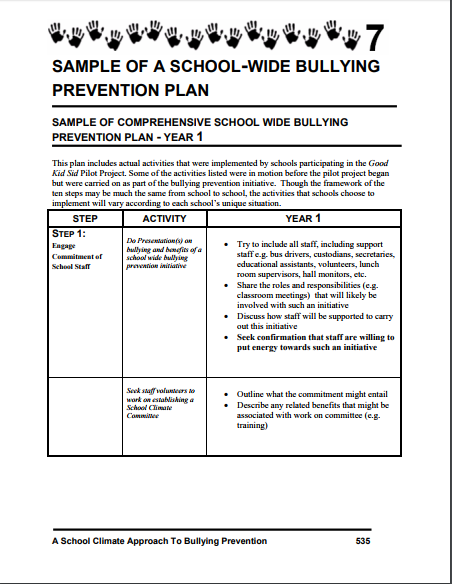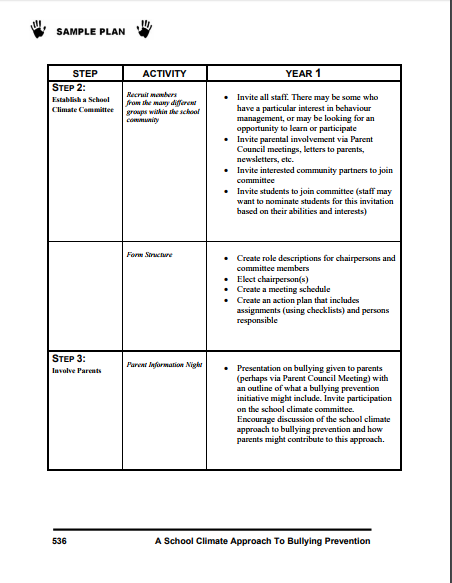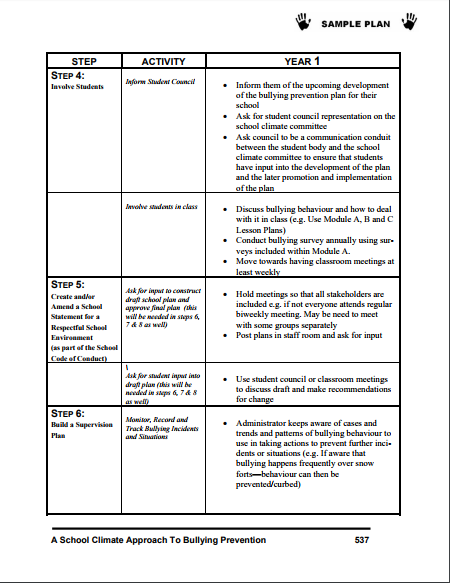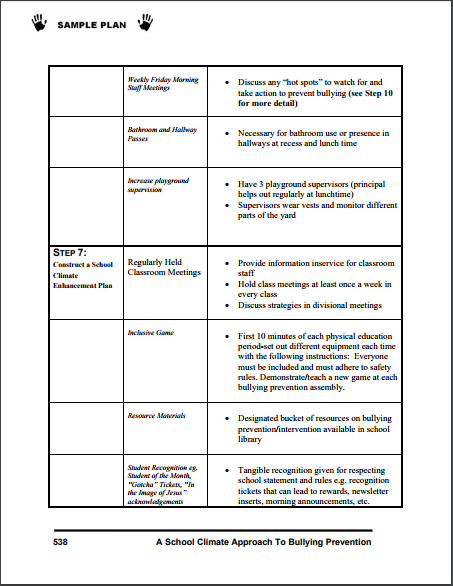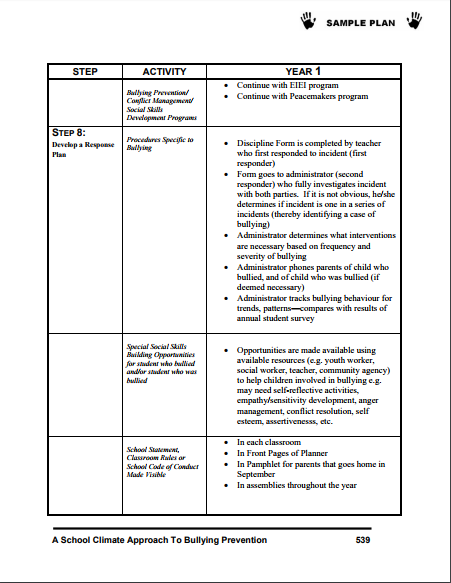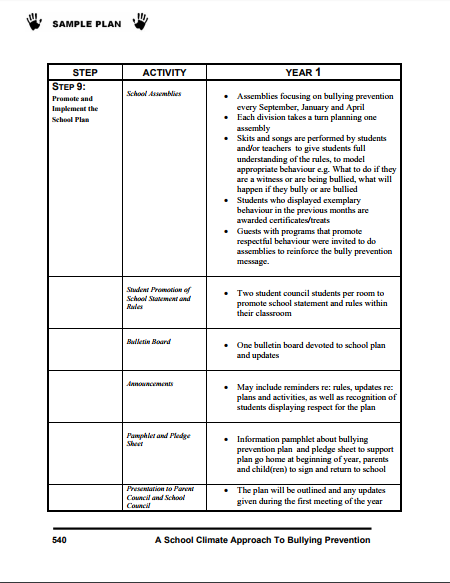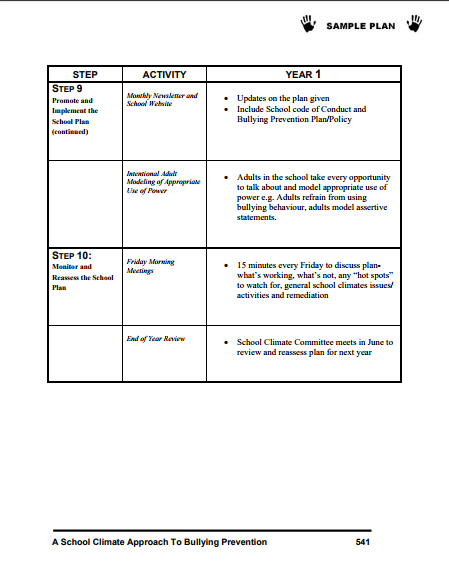Bullying in Schools
5 Ways to Reduce Bullying in Schools
1. Consistent school intervention
There must be a response to every reported incidence of bullying in order for students to trust that something will be done if they report bullying. Intervention clearly demonstrates the seriousness with which the school approaches bullying.
2. Common language
Common phrases and vocabulary will foster a better understanding of, and consequently a greater identification of, bullying.
3. Adult authority and supervision
The single most effective deterrent to bullying is adult authority and supervision.
4. Communication of bullying
The most basic prerequisite to an effective response to bully at school is staff awareness of bully incidents. Communication in the school involves recording incidents of bullying on standardized paperwork, monitoring the paperwork for patterns, and communicating this information to the staff.
5. Develop skills and strengths in students
Provide opportunities for students to learn social skills, conflict resolution, problem solving, and prosocial activities – i.e. teach games, start clubs.
There must be a response to every reported incidence of bullying in order for students to trust that something will be done if they report bullying. Intervention clearly demonstrates the seriousness with which the school approaches bullying.
2. Common language
Common phrases and vocabulary will foster a better understanding of, and consequently a greater identification of, bullying.
3. Adult authority and supervision
The single most effective deterrent to bullying is adult authority and supervision.
4. Communication of bullying
The most basic prerequisite to an effective response to bully at school is staff awareness of bully incidents. Communication in the school involves recording incidents of bullying on standardized paperwork, monitoring the paperwork for patterns, and communicating this information to the staff.
5. Develop skills and strengths in students
Provide opportunities for students to learn social skills, conflict resolution, problem solving, and prosocial activities – i.e. teach games, start clubs.
Additional Ways to Reduce Bullying in Schools
- employing, redeploying or re-emphasizing the social skillsbuilding programs that are already supported by your school board
- facilitating indoor and outside activities for lunch and recess
- teaching appropriate and enjoyable playground games
- providing supervised activities for rainy days
- offering recreational and hobby clubs
- reducing class changes as crowded hallways are a prime location for bullying
- staggering recess times, since much bullying of younger students is by older students
- providing ongoing social skills learning opportunities
- using co-operative learning in the classroom
- starting a playground buddies program
- forming a leadership club to train volunteer playground leaders to help younger children with group games (e.g., managing equipment and refereeing).
NOTE: Taken from “Imagine … A School Without Bullying: A School Climate Approach to Bullying Prevention” by the Waterloo District School Board, Waterloo Public Health, and the Waterloo Catholic District School Board. It includes the latest research regarding bullying prevention and examples from the lessons learned from the 3 year pilot project “Good Kid Sid”.
Macro Plan to Reduce Bullying in Schools
See this original plan to reduce bullying in schools on pp. 535 of “Imagine … A School Without Bullying: A School Climate Approach to Bullying Prevention”

